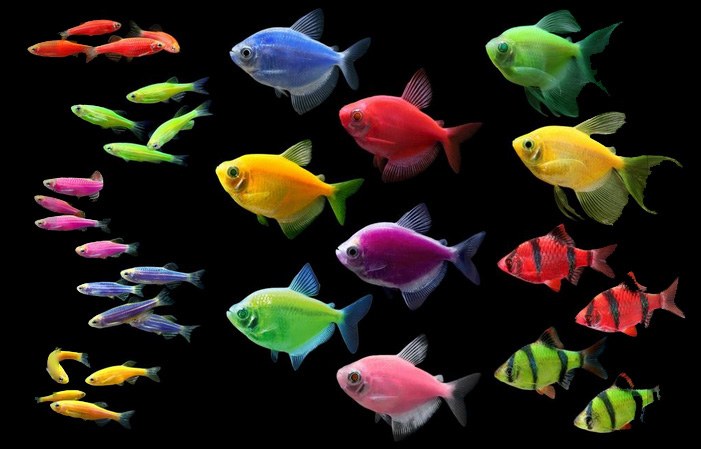Americans are ambivalent about the use of genetic engineering in animals — a view that turns sharply positive when the technology promises to benefit human health.
For example, 70 percent of Americans support genetically engineering mosquitoes to prevent their reproduction in a bid to halt mosquito-borne illnesses like malaria and Zika, according to a new poll by the Pew Research Center. By comparison, 77 percent say it’s “going too far” to use the technology to engineer aquarium fish that glow in the dark.
Ironically, fluorescent GloFish were the first GE animals approved for commercial sale in the United State and the brand sold last year for $50 million in cash. Meanwhile, attempts to release genetically modified “self-limiting” mosquitoes have met with resistance in the Florida Keys, despite promising trials elsewhere.
And though 57 percent think it’s appropriate to use GE animals to grow organs and tissue for transplant into humans, just 43 percent support using the technology to produce more nutritious meat. Only 32 percent say restoring an extinct species is a reasonable use of genetic engineering.
In the poll, conducted April 23-May 6, researchers presented a nationally representative sample of 2,537 US adults with five different scenarios of animal genetic engineering that are currently available, in development or considered possible in the future.
Pollsters did not ask Americans their views on using genetic engineering to improve animal welfare, such as breeding polled dairy calves that do not need to be dehorned and pigs that do not need to mechanically castrated. Nor were they queried about using the technology to reduce the environmental impacts of food production, such as the fast-growing AquAdvantage salmon, which requires less feed to reach market size.
When asked why, Cary Funk, Pew’s director of science and society research responded: “The study is part of our ongoing research about how people make sense of emerging developments in science and technology. This is our first look at public reaction to animal genetic engineering. We were aiming to include a range of uses of genetic engineering in animals that are described in the scientific community as available now or coming down the road. It is striking to see the wide variation in people’s views about animal genetic engineering depending on the mechanism and purpose. People’s explanations for their views illustrate a nuanced concern for the potential impact of these technologies on animals, humans and the broader ecosystem.”

In general, men and people with a high level of science knowledge, as well as those with a low religious commitment, tend to be the most supportive of genetically engineered animals. The survey also found that the 52 percent of Americans who in general oppose the use of animals in scientific research are also more inclined to reject specific uses of genetic engineering in animals.
Pollsters asked a subset of respondents to explain why they felt certain uses of the technology were unacceptable. “A common refrain in these responses raised the possibility of unknown risks for animals, humans or the ecosystem. Some saw these technologies as humankind inappropriately interfering with the natural world or raised general concerns about unknown risks,” the report noted.
About 30 percent of those who opposed genetically engineering mosquitoes felt that humankind would be “disrupting nature (23%) or interfering with God’s plan (8%),” according to the report. Animal welfare was a concern for some of those who rejected using the technology to grow organs or tissue for human transplant, as well as fears about “mixing human and nonhuman genetics.”
“Those who objected to the idea of bringing back extinct species often raised concerns about unintended harm to the ecosystem,” according to the report. “Roughly two-in-ten (18%) of those asked explained their views by saying there is a reason that these animals are currently extinct, with some saying these animals would be unlikely to survive if brought back, and another 12% of this group raised potential risks to other species and the ecosystem from bringing an extinct animal into a different world.”
About a quarter of the respondents opposed to using GE to revive extinct species discussed these ideas in terms of “God’s plan and human interference with the natural world,” the report state.
As one person noted: “Nature has selected species to become extinct over millions and millions of years. We have no right to bring animals back and play God.”
However, research indicates that humans have been responsible for driving at least 500 species to extinction just since 1900, while another review found that current extinction rates are up to a thousand times higher than they would be if people weren’t in the picture.
